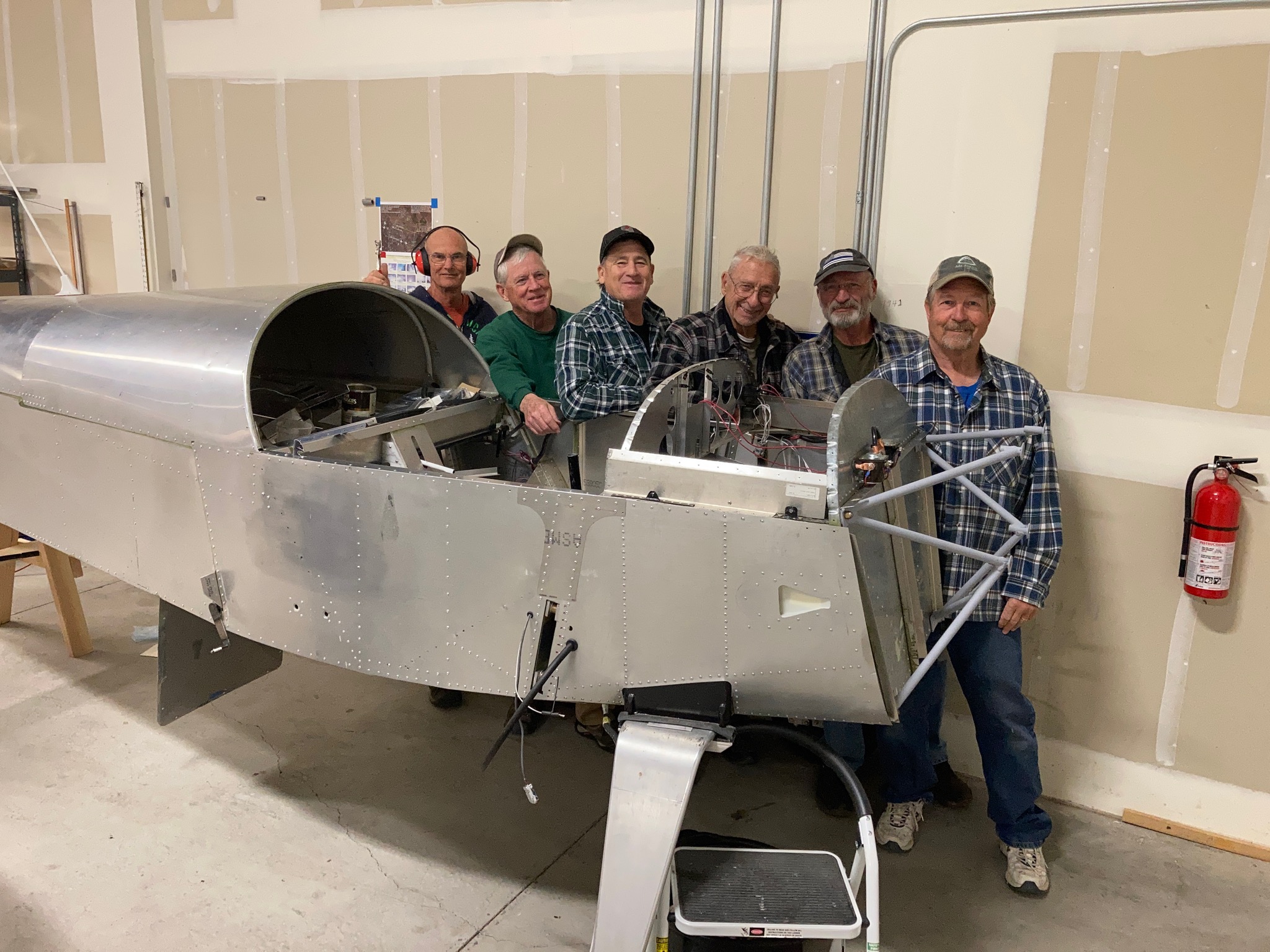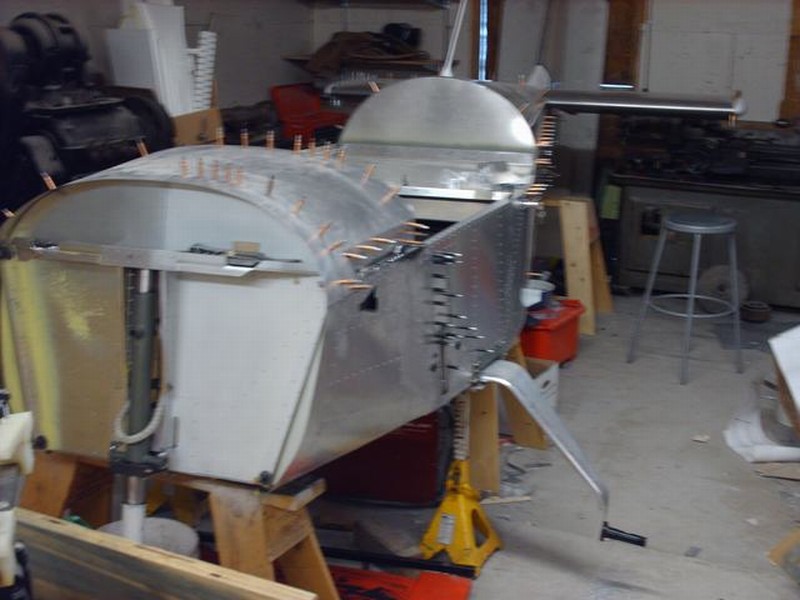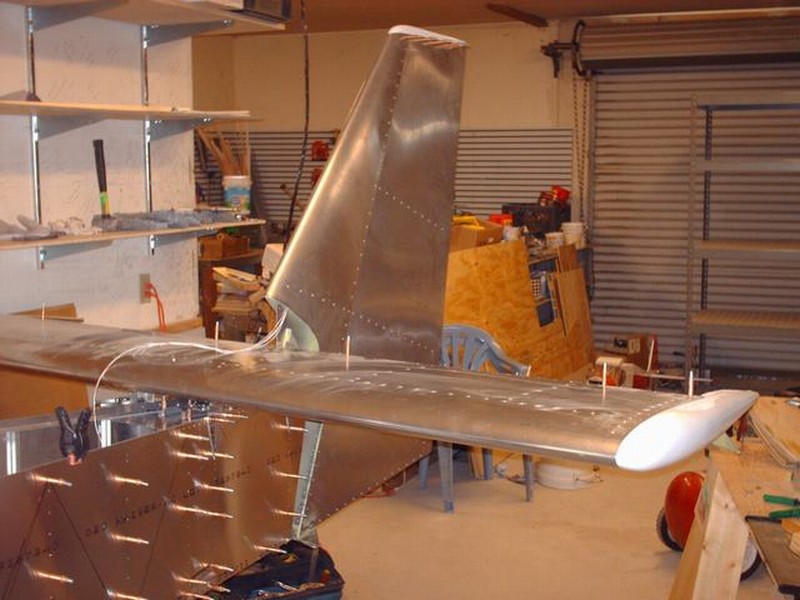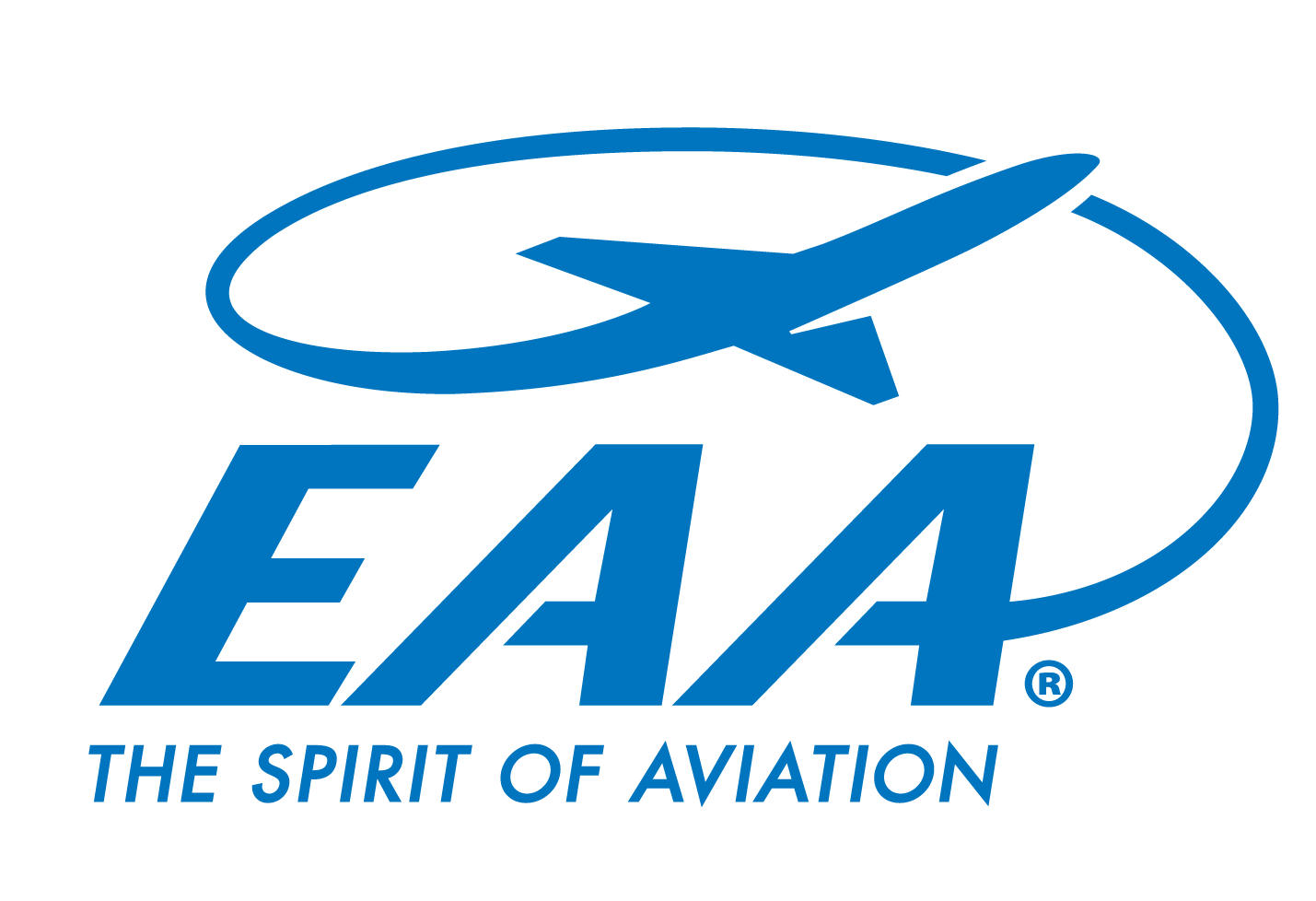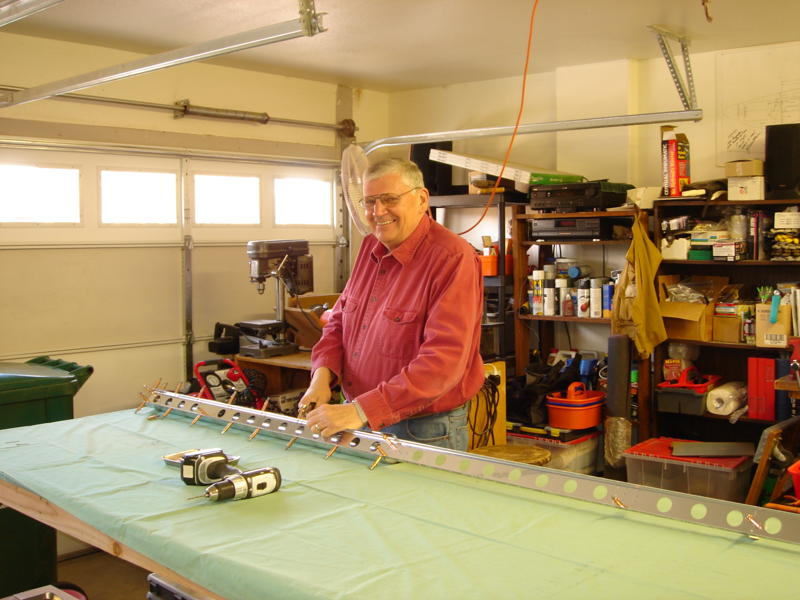
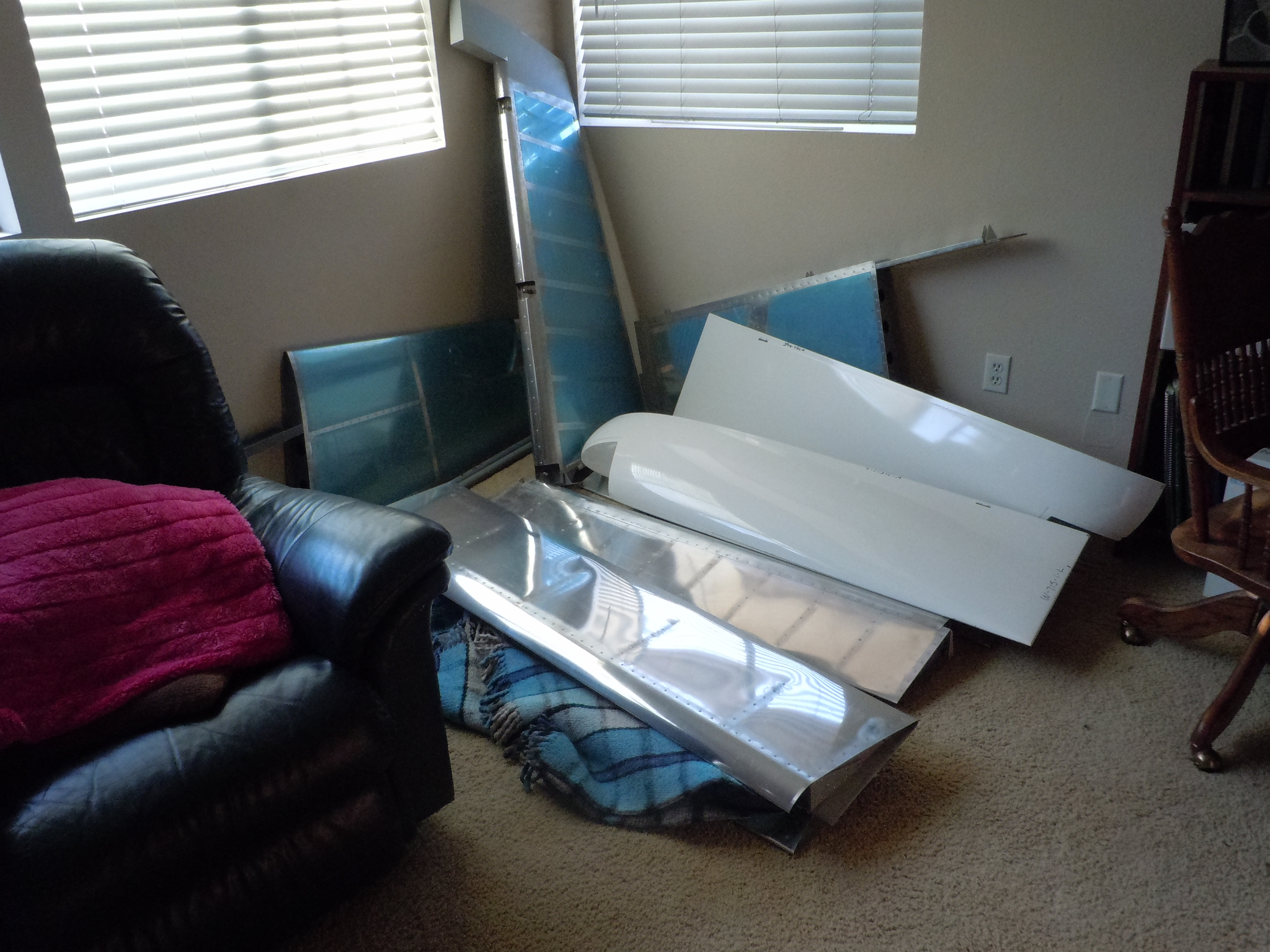


Aircraft Building
The world of homebuilt aircraft, officially known in the United States as Experimental Amateur-Built Aircraft, has existed as long as powered flight. Even the Wright brothers were homebuilders, since they didn't rely on a factory to construct their airplanes. They, like the homebuilders of today, used their own abilities and craftsmanship to construct safe and efficient flying machines.
EAA was founded in 1953 by a group of airplane enthusiasts mostly comprised of airplane builders, although anyone with an aviation interest has always been welcome in the organization. EAA has been the organization of record as the homebuilt movement moved from simple, single-place tube-and-fabric airplanes 60 years ago to today's wide spectrum of aircraft that feature plan-built and kit-built models. No matter the airplane project, one thing remains constant; homebuilt aircraft provide a path where nearly anyone can pursue their personal dream of flight.
Experimental amateur-built aircraft, often called "homebuilts" because they are typically built in people's garages and basements, are the fastest growing segment of new aircraft in the United States. Amateur-built aircraft are built by individuals and certificated by the Federal Aviation Administration (FAA) as "experimental amateur-built" (E-AB).
Sierra Chapter 403 has resources to help you on your building journey:
EAA was founded in 1953 by a group of airplane enthusiasts mostly comprised of airplane builders, although anyone with an aviation interest has always been welcome in the organization. EAA has been the organization of record as the homebuilt movement moved from simple, single-place tube-and-fabric airplanes 60 years ago to today's wide spectrum of aircraft that feature plan-built and kit-built models. No matter the airplane project, one thing remains constant; homebuilt aircraft provide a path where nearly anyone can pursue their personal dream of flight.
Experimental amateur-built aircraft, often called "homebuilts" because they are typically built in people's garages and basements, are the fastest growing segment of new aircraft in the United States. Amateur-built aircraft are built by individuals and certificated by the Federal Aviation Administration (FAA) as "experimental amateur-built" (E-AB).
Sierra Chapter 403 has resources to help you on your building journey:
- Other builders to share their experiences, good and bad.
- Technical Counselor's to advise you along the way.
- Reference and "How-To" materials.
- Plans.
- Tools.
- Chapter presentations and workshops.
- Chapter projects.
- Help that is just a phonecall away.
Maybe you're asking yourself...
Can I Really Do This?
If you know what the pointy end of a screwdriver is for, you can build an aircraft. The skills necessary to build today’s state-of-the-art aircraft kits are simple to learn and well within the reach of almost everyone. Every year, kit aircraft manufacturers continue to refine their offerings and take advantage of the latest manufacturing technology. All you really need is the desire to build and a willingness to learn.
Are Amateur-Built Aircraft Safe?
The short answer is yes. As you may expect, the overall accident rate for homebuilt aircraft is slightly higher than factory-built aircraft. Studies by FAA and the National Transportation Safety Board (NTSB) show that amateur-built aircraft have an accident rate less than one percentage point higher than the general aviation fleet. In fact, the accident rate for amateur-built aircraft is dropping. The total number of registered homebuilt aircraft is increasing by about 1,000 each year, while the total number of accidents has stayed virtually the same.
Are There Any Restrictions on the Use of My Aircraft?
After being inspected by the FAA, you will be required to complete a flight test program to determine that the aircraft is safe for flight. This will typically be a minimum of 40 hours, or 25 hours if you use an FAA-approved engine and propeller combination. Once flight testing is completed and the appropriate logbook entry made, you are able to use the aircraft following the normal operating rules of the sky. You may fly cross country, carry passengers, and generally enjoy yourself. The only significant restriction is that you are prohibited from carrying persons or property for compensation or hire.
What FAA Rules Must I Follow When Building?
In order to receive an E-AB airworthiness certificate when the aircraft is complete, you will need to be able to demonstrate that “amateurs” (you and any helpers) built the majority of the aircraft for “education and recreation.” This is often referred to as the “51-percent rule.” You will do this by keeping a “builders log” to show the FAA inspector that you completed the majority of the tasks. There is no set format required for a builders log; however, the burden of proof is on you. A simple log documenting the task completed and the date along with some photos will do. Probably the easiest builders log is to simply take lots of photos during the building process, including ones of you doing various tasks. Not only will this satisfy the FAA, but you also will find the photos helpful during future maintenance work, and it’s a great memento of the project.
How Do I Know if a Kit Will Meet the 51-Percent Rule?
The FAA, if requested by a kit manufacturer, will inspect an aircraft kit to determine that it will meet the “51-percent rule.” This provides potential builders the assurance of knowing that the kit will qualify as amateur-built when completed. The FAA does not evaluate the design and FAA’s review does not mean that the kit is FAA “certificated” or “approved” in any way. The list of kits that have received “Letters of Eligibility” is available at this website.
How Do I Handle the FAA Paperwork?
EAA’s Amateur-Built Aircraft Certification Kit was created to help you with the FAA paperwork required for building your own aircraft. The kit includes everything you need to register and certificate a new experimental amateurbuilt aircraft. The 15-page, step-by-step Certification Guide walks you through the entire process, from getting a registration “N number” to the aircraft inspection, and provides samples of how to complete each required form. The certification kit also includes all FAA forms, an “Experimental” sticker (in black), a dataplate, and a convenient placard decal sheet. To order, call EAA at 800-843-3612 or visit ShopEAA.org.
How Much Will It Cost to Build?
The cost of an aircraft kit typically excludes the engine, propeller, avionics, interior, and paint. A good rule of thumb is to budget one-third for the cost of the kit, one-third for the engine, and one-third for everything else. So for a kit that costs $15,000, you will have roughly $45,000 invested when it is completed and flying.
What is “Scratch Building”?
Scratch building is when you build your own aircraft but do not use a kit. Instead, you start with a set of plans and effectively build your own kit by making all the parts yourself. If you are working on a tight budget or simply enjoy the building process, this is an option to consider. You can often “cash flow” the building process with small purchases of materials because of the added time needed to build all the parts.
Can I Fly IFR in a Homebuilt?
Yes, assuming the aircraft is appropriately equipped for instrument flight and you hold an instrument rating. Do I Need a Pilot’s Certificate to Fly a Homebuilt? Yes, you will need a pilot certificate with the appropriate ratings and endorsements (e.g. tailwheel) for the aircraft you build.
How Much Room Do I Need to Build?
You really don’t need all that much space to build an aircraft. It is only when you start attaching the wings to the fuselage that it takes up a lot of space. A one-car garage is enough to build most aircraft but a two-car garage is even better.
How Long Will It Take to Build?
Kit aircraft can be built in as little as 500 hours to as many as 1,500 hours. A lot depends on the complexity of the aircraft design. Obviously, an aircraft with a retractable landing gear or a pressurized aircraft will take much more time than most of your basic metal kits.
What if I Need Help Along the Way?
EAA was formed in 1953 for this reason. We provide our members with articles, books, and videos that teach you what you need to learn to build an aircraft. Our two-day instructional SportAir Workshops are extremely valuable for learning the fundamentals of construction.
How Do I Make Sure I Build a Safe Aircraft?
On a project as large as an aircraft, it is always good to have a second set of eyes inspect your work. EAA’s Technical Counselors are experienced aircraft builders who will visit your project and examine it for any substandard workmanship. There is no cost to the inspection, and EAA recommends a minimum of three visits during the construction of your aircraft.
What about Flight Testing?
The FAA will mandate that the aircraft be flight tested for at least 40 hours (25 hours if you use a type-certificated engine and prop combination) to prove the aircraft is safe for flight. Once the flight time has been completed, a logbook entry is made indicating that the aircraft is “safe for flight.” At this point, passengers can be flown.
Do I Have to be the Test Pilot?
No, the builder does not need to be the test pilot. Any appropriately rated pilot can perform the test flying. You may choose to let a more experienced pilot do the first few flights and then you can finish the flight testing. Either way, EAA’s Flight Advisor program is a must. These dedicated volunteers will work with you to plan a safe first flight and thorough flight-test program.
Annual Condition Inspections
One of the major advantages of building your own aircraft is that you qualify for a “Repairman Certificate.” You must apply to the FAA for it, and once it is issued, it allows you to perform the required annual condition inspection to determine that the aircraft is in a “condition for safe operation.” By holding the repairman certificate, you are authorized to record the inspection in your aircraft logs. The repairman certificate is only issued to one individual per homebuilt aircraft and is non-transferrable.
Maintenance and Repairs
Another major advantage of building a homebuilt is that anyone, not just the builder, can perform the maintenance and repairs. Any part deemed appropriate by the person performing the maintenance and repairs can be used. Not only does this save you the cost of labor but there can be a tremendous cost savings over FAA certificated parts.
Is Aircraft Insurance Available?
Yes. EAA’s Aircraft Insurance Plan is available to provide liability and hull coverage for almost all the amateur-built aircraft offered today. In addition, construction insurance is available to protect the value of the kit while you are in the building process. Learn more at EAA.org/insurance.
Will I Have Legal Liability When I Sell the Aircraft?
Yes, the potential exists, but the reality is far different. In more than 60 years of homebuilding, EAA is unaware of a single successful lawsuit against an amateur builder.
